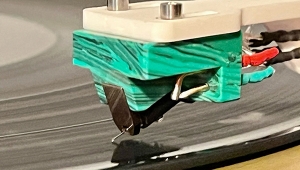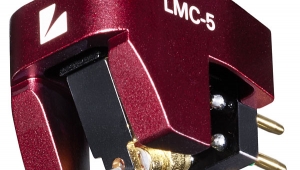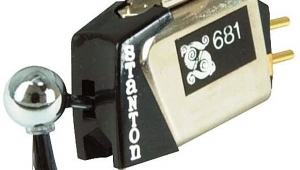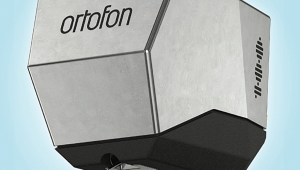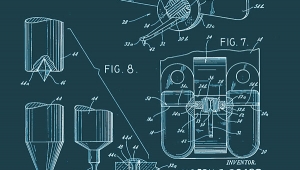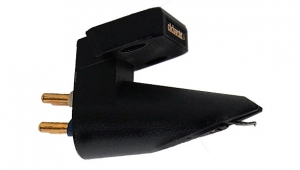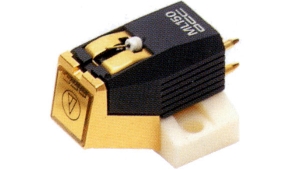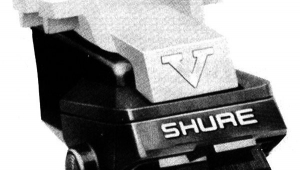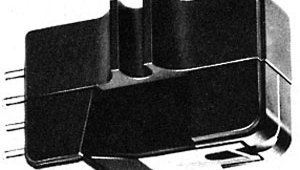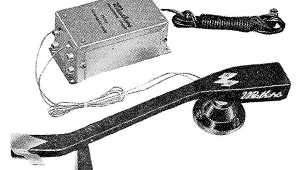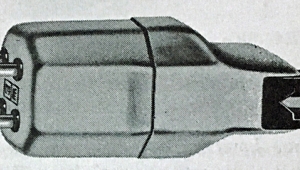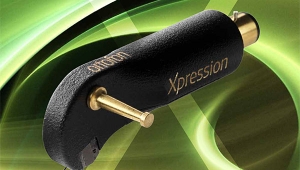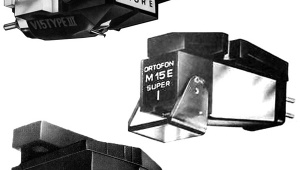| Columns Retired Columns & Blogs |
Linn Akiva MC phono cartridge
The observation has been made, often and well, that audio writers are out of touch when it comes to judging value for money. For one thing, we get to live with exotic gear for months at a time, without spending a penny. For another, when we do decide on a more permanent upgrade, we usually get the opportunity to buy at wholesale—at a so-called "industry accommodation price," extended to us because, after all, we are a part of the industry.
I try not to be too cynical—about pricing, at least. It helps that very expensive products tend not to interest me as much as more affordable ones (although I suppose that's relative). It may also help that I still own and use products that I bought, freely and happily, at the same retail prices as anyone else—such as my Linn Sondek LP12 turntable, my Grace F9E phono cartridge, and others.
I try and, I think, I mostly succeed. But Linn's latest top-of-the-line phono cartridge, the Akiva ($3000), was central to my most recent failing. The poor thing sat in a box—a box, I tell you—for a whole year before I got my ass into motion and deigned to try it.
The Akiva finally came out of my closet when I reviewed the EAR 324 phono preamp for Stereophile's July 2004 issue. I was looking to try the EAR with every different cartridge I could get my hands on—and there, forgotten and forlorn, was the Akiva. Into the system it went, from whence it has daily smacked my gob.
Let's pause for a look at Linn's cartridge history. In the beginning, Linn endorsed Supex moving-coil cartridges from Japan for use in their record players. After that, Supex was engaged to make a series of cartridges exclusively for the Scottish firm, beginning with the famous and rightly loved Asak. The Supex-Linn line evolved over the years, arguably reaching its high point with the Troika, which signaled the bold step of offering a phono cartridge with three rather than two bolts, and whose output connections were flying leads rather than pins of the usual sort. Those changes wrought real improvements in the cartridge's mechanical and electrical behaviors, respectively, but they also served to limit the Troika's appeal to people with Linn tonearms.
Other arms could be used with a bit of fiddling, but keep in mind that the Troika was introduced when digital was gaining ground over analog, and audiophiles were in less of a fiddling mood than ever before. (However, when Naim introduced their Aro tonearm in 1988, it featured a hole in precisely the right spot for the Troika's third bolt—at a time when Naim's managing director, the late Julian Vereker, used a Fidelity Research cartridge as his first choice!)
After that...well, after that, the runner stumbled. Supex had already faded from the scene, and while Linn had apparently already bought a goodly supply of parts, they needed to find a new cartridge-building partner. By then, the Japanese-with-English-roots manufacturing firm Scan-Tech had made a reputation for itself with its superb Lyra MC cartridges, which seemed to do everything well, pleasing flat-earthers and high-enders alike, and they and Linn began working together.
As one might reasonably expect when Company A designs a product and asks Company B to make it exclusively for them, neither party is terribly anxious to gab. So the story gets a bit hazy here. What I can say is that the next two top-of-the-line cartridges from Linn, the Arkiv and the Arkiv B, appeared to have been manufactured by Scan-Tech, yet bore little resemblance to anything else in Scan-Tech's continually evolving Lyra line. They also sounded different—different from the Troika, and different from the other Lyras. And while one might have hoped the new baby would have the best features of both parents, that hope has gone unfulfilled. Until now.
From the outside, the new Akiva looks just like the Arkiv B. It has the same Linn-sourced aluminum-alloy body, designed around the same three-bolt mounting system. The body also retains the two side windows, protected with clear plastic inserts. These seem intended to eliminate unnecessary mass, and they have the side benefit of letting you see what's inside.
And it's when you look inside that you notice: The Arkiv B and the Akiva are as different as different can be. In fact, the working parts of the Akiva look quite similar to the working parts of the current Lyra line. Which is to say: The Akiva is built around Scan-Tech's Da Capo motor system, in which ring-shaped rare-earth magnets bathe the armature in magnetism, rather than using metal pole-pieces to focus the flux lines. Discarding the needless metal bits is said to help prevent eddy currents (cf Denis Morecroft), and no one in his or her right mind would complain whenever a maker of MC cartridges finds a way to reduce his product's mass. (An arched support, machined from an unnamed synthetic, takes the structural place of the pole-pieces and old-style magnet.)
Is it that reduction in mass that allows the Akiva to track so much better than its predecessors? Maybe. All I know is that this new cartridge has sailed through everything I've played so far, from the most forceful piano chords to the loudest singers in Georg Solti's historic recording of Wagner's Ring. The Akiva is more than just a good tracker, though, and while I don't have a Troika on hand for comparison, my impression is that the new Linn is superior to its illustrious predecessor in every musically meaningful way.
I wouldn't have guessed the Troika's wonderfully deep, tight, and tuneful bass performance could be bettered, but after hearing the way the Akiva nailed the sound of the electric bass and kick drum on Led Zeppelin's "Achilles' Last Stand" (from Presence, Swan Song/Classic SS 8416), I'm a convert. I recall the Troika sounding thicker in the lower mids than the Akiva, but I can state comfortably that the Akiva was not at all lean. The new one was timbrally right, with a clear, open, naturally detailed sound that never lapsed into exaggerated detail. Similarly, its spatial performance was solid and precise but never fussy: The musical message was always stressed over sonics.
Once again, I've saved the best for last. In Linn's early days as a cartridge supplier, I considered their MC models to be the best available in terms of rendering surface noise easy to overlook, if not completely absent. This, according to Linn, was owing to their superior mechanical design more than anything else: Because they did not ring or resonate as severely as other cartridges, Linn's models were able to "play" groove damage without exaggerating it.
Then, in later years, I came to regard Lyra's cartridges as the most impervious to disc noise—not only to scratches and pops but to steady-state groove grunge as well. Was that, as some have suggested, because Scan-Tech uses a smaller and more finely shaped stylus tip than other makers—one that snuggles into a deeper and, quite possibly, less damaged portion of the groove? No one can say for sure. But neither would I hesitate in saying that the Akiva is, without a doubt, the quietest phono cartridge I've ever used, and the one that's least perturbed by all the older records in my collection. In this sense, the Akiva does indeed combine its parents' best features.
Incidentally, Naim Aro owners will be delighted by how well the Akiva works in their tonearms: Bolt it into the nonadjustable headshell, set the downforce and playing height, and bingo: perfect alignment. It dropped so neatly into the dimpled target of my alignment protractor that I nearly cried. The only setup drawback—and this will be equally true of all non-Linn tonearms—has to do with the Akiva's flying leads, which are female connectors. To fasten them to the similarly feminine connectors on most tonearms, one needs a male-to-male rod (sorry), which can be as simple as a bit of stiff (sorrier) wire. For my installation, I harvested the pins from a very old and worn-out cartridge, and used those to bridge the connectors.
At $3000, the Akiva is expensive but not too expensive, given not only the precision machining required to make it but also the accuracy required to form, polish, and align its obviously very good line-contact stylus. And I assume that Linn will be around to do retips and reconditioning work throughout much of the future—which, as the great Crisswell once noted, is where we'll be spending the rest of our lives.
In order to "deserve" a $3000 cartridge, a record collection must be both large and loved; now, apparently, it can be somewhat worn as well. Were phonographic monogamy required of me, I'd tie the knot in no time.—Art Dudley
- Log in or register to post comments
